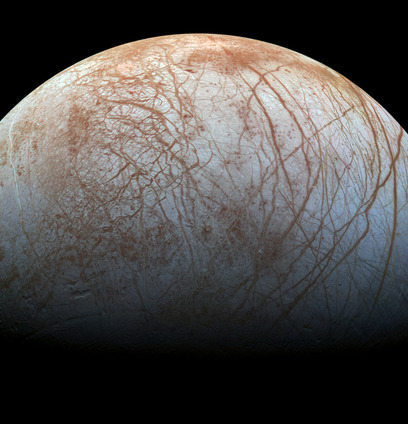NASA mission to Europa will seek conditions for life
NASA’s Europa spacecraft will use nine scientific instruments to assess the icy, ocean-harboring Jupiter moon’s ability to support life, space agency officials announced Tuesday. The Europa probe — which is scheduled to launch in the early to mid-2020s — will carry supersharp cameras, a heat detector, ice-penetrating radar and a variety of other gear that will shed light on the satellite’s surface composition and the nature of its salty subsurface sea, among other things, NASA officials said.
[This] will help us take great strides forward in understanding the habitability of Europa.
Curt Niebur, Europa program scientist at NASA’s Washington headquarters
Astrobiologists regard the 3,100 km wide Europa as one of the solar system’s best bets to host extraterrestrial life. Europa possesses a salty ocean beneath its ice shell, and this sea is apparently in contact with the moon’s rocky mantle, making possible a number of complex chemical reactions, scientists say. Most of what scientists know about Europa is based on data gathered by NASA’s Galileo mission, which orbited Jupiter in the 1990s and early 2000s and made about a dozen flybys of Europa during that time.
It’d be great to think that the results from this particular mission would lead, in the next decade, to some new and exciting concepts about potentially getting underneath the ice shell.
Jim Green, head of NASA’s Planetary Science division

Science europa